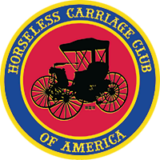Harold Sharon
How High is Too High?
Some brass car owners worry about raising the compression ratio too much.
First, realize that most of the time you are driving at about half throttle or less. Starving the intake of its full measure is the only way to slow the car. If you monitored a vacuum gauge on the intake at low throttle setting, you would see, as an example, 20″ of vacuum. That means the air coming in is at one third of atmospheric pressure. Assuming a compression ratio of 4:1, this results in a compression pressure of about 20 PSI ( 15 PSI x 1/3 x 4 ). The fuel charge lights at about this pressure. Not much, but enough to keep the car puffing along at maybe 25 MPH.
Throttle up to where the inlet is at about 2/3 of atmospheric pressure and the charge now lights a 40 PSI, and the car goes faster. Not twice as fast, because air drag has gone way up.
Now get this: If you had a high compression piston in the cylinder, at 25 MPH you would still be lighting the fire at 20 PSI. How come? Because to go 25 MPH with the high compression piston requires that the the throttle not be opened as much! Same scenario at 2/3 of atmospheric pressure.
If you are driving alongside an identical car and it is at WOT (wide open throttle) you will not be at WOT. However, at wide open throttle, with the high compression piston, a higher combustion pressure can be reached than possible with the standard piston and you will run away from the guy with standard 4:1 CR. . Result; more speed. More stress on all the parts.
As an incidental, the higher the pressure, the faster the burn time, therefore, the less advanced the spark should be. Too much advance, especially at lower RPM and wide open throttle can be bad news. You typically won’t hear “ping” because the compression ratio is still very low in light of modern fuel octane, and typical cylinder temperature is cooler than with a modern car, but you will hear something equally unpleasant; it’s what the old-instruction manuals called “pounding”. That’s the sound of bearings and pistons trying to escape. It’s easy to avoid. Just retard the spark to where things quiet down.
